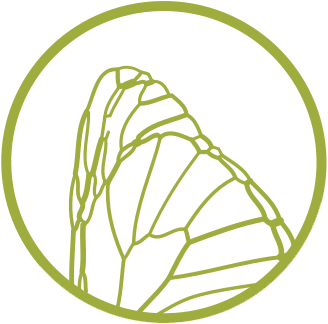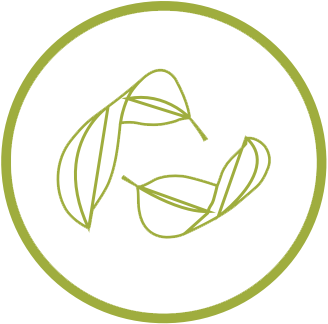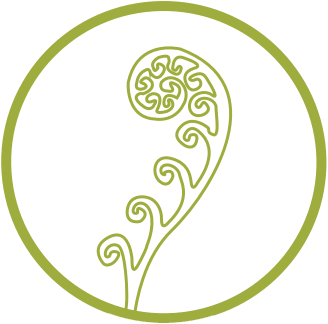We sent our most recent set of Certified Biomimicry Professionals out into the world not too long ago. They represented the first class of graduates to earn the BPro title and a Master’s of Science in Biomimicry from Arizona State University. As always, the cohort included an impressive mix of professionals that came together from a diverse set of backgrounds for a two-year learning journey that ended in November in Botswana.
But what does it mean to be a BPro? And how do graduates incorporate into their careers?
We asked a pair of BPros from two past cohorts to reflect on the inspiration they found in the program and about how biomimicry has influenced their careers:
Rachel Hahs—2013-15 BPro graduate
Sustainability and Innovation Consultant
10 years as a Sustainability and Environmental Consultant
Why add biomimicry to your professional portfolio?
I was looking for something else to move my career forward. I really felt, and still feel, that the primary focus in the mainstream sustainability discussion on efficiency in business operations really misses the mark on where the greatest sustainability gains can occur. If you move that conversation up to the design table, you can have a much greater impact throughout the lifecycle of a product or service, including but not limited to business operations. I saw (the BPro) program aim was to do just that and applied right away.
What was the best part of the BPro experience?
For my personal journey, the work we did on understanding ourselves and how our personalities influence the way we live and work both as individuals and in groups was extremely valuable in gaining a much deeper insight into handling the dynamics of working in multidisciplinary teams—a reality intrinsic to the practice of biomimicry. The leadership work we did also focused on developing a clear vision for how we will go forward in the world, which has helped me to hone and tailor my message in an appropriate way for varying audiences. I feel this experience has not only prepared me with the skills to be a leader in the field of biomimicry, but also given me the confidence, inspiration and courage to do just that. I’ve seen the same kind of changes in everyone else in the cohort too. To go through this metamorphosis with 18 other incredible people has been a truly exceptional experience.
How will you incorporate biomimicry into your career?
My hope is that further down the line I’ll be able to not only use biomimicry in sustainability projects, but also be a thought leader on how companies can use and leverage what biomimicry has to offer in the innovation space. My last project in the program was to use biomimicry thinking to inform how we might accelerate the adoption of truly disruptive (biomimetic) innovations and the paradigm shifts they represent in their respective product categories. My hope post graduation is to conclude this research and use the findings to accelerate our shift to a sustainable future.
What advice would you give a prospective BPro student?
I would say that anyone thinking about doing the program should be prepared to go through significant personal reflection. Go into it being open to gaining a better understanding of yourself and your purpose in the world. The outcome of this journey puts you in a much better position to go forth and really pursue the difference you want to make. You’ll find others will be eager to follow you on your quest.
Gamelihle Sibanda—2011-2013 BPro graduate
Chief Technical Adviser, United Nations (ILO) and Advisory Group, Biomimicry South Africa
24 years of provision of infrastructure in 13 countries. Increasingly focusing on ecological engineering, climate change adaptation, and bio-inspired innovation
Why did you choose to add biomimicry to your professional portfolio?
I spent my childhood in nature where my community taught me indigenous knowledge that fuelled my curiosity about why things are the way they are and why and how they do the things they do. At school I loved both sciences and arts. Civil engineering gave me a technical perspective and ability to create things. Public speaking, poetry, radio and television acting nourished my bug for the arts. Business school gave me management and strategic insights. However, I felt something was missing. Biomimicry brought everything I knew under one umbrella, while building on the foundation of nature that shaped my childhood. I like to say, “Where others see things that are and ask why?, I dream about things that do not exist and ask why not?” Biomimicry offers me a creative outlet that links my dreams with reality, both in the practical and metaphorical senses.
What was the best part of the BPro experience?
The best part of the BPro experience was the immersion in nature in seven biomes of the world ranging from desert to ocean to rain forest, all in places that can easily pass as holiday destinations. I loved the interaction with members of my cohort and instructors—so much that this was the first course where I did not want to graduate in order to prolong the experience. In order to continue this amazing learning format, after graduation, I teamed up with Hugo (Mexico) and Sara (Egypt) from my cohort to curate Biomimicry for/from the Soul (bSoul), a self-organised nomadic international network of biomimicry practitioners. Members (bSoulers) gather every two years for biomimicry nourishment and then migrate to pollinate other networks. The inaugural immersion in Mexico in 2014 was such a success that another one is scheduled for 2016 in Africa.
How have you incorporated biomimicry into your career?
I have applied Biomimicry in various contexts including the following:
Creation of awareness about biomimicry through public engagements and with industry specific groups such as engineering, architecture, packaging, and retail.
Guest lectures at several universities in South Africa to impart biomimicry knowledge to lecturers and students in disciplines such as engineering, architecture and design
Product design input for an international company involved in the health consumer industry
Embedding biomimicry into civil engineering designs and urban planning that foster resilient cities and communities through integration of ecological infrastructure.
Advising a government employment creation flagship program to create green jobs that enhance the transformation towards a green economy.
Developing bio-inspired innovation strategies for entrepreneurs and an innovation incubator using the Biominga Innovation Model, which I co-developed with three members of my biomimicry cohort. The model is based on innovation strategies that nature has tested and refined over the past 3.8 billion years.
What advice would you give a prospective BPro student?
Biomimicry integrates various disciplines. Therefore, the learning experience is enriched by the diversity of the cohort. Unlike in a typical class, where each subject has a top student, the fact that BPros are a mix of various backgrounds each participant feels like an expert, contributing to a common whole that is better than the sum of the individuals. The in-person immersion sessions in various biomes of the world create an ideal environment to learn from nature, guided by local ecologists in a setting that could easily be mistaken for a holiday retreat. Professional relationships develop and last beyond the training period. If you are open to perspectives from other disciplines, love nature, love to travel, want to leave this planet better than you found it, have friends from a global community and be known as the person with ideas that are beyond amazing, then the BPro course is for you.
The next BPro cohort will begin in May 2016, welcoming another cohort on the learning journey inspired by nature. Applications for the cohort are due January 15. Learn more here.




